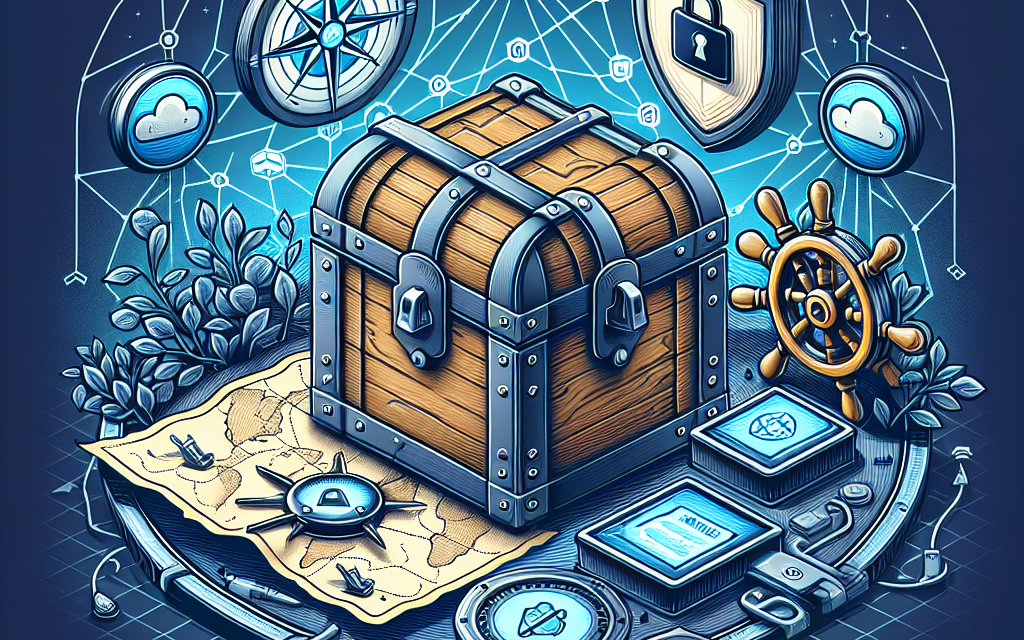Kubernetes has transformed the landscape of application deployment and management, offering developers powerful tools to orchestrate containerized applications seamlessly. One of the most popular tools in the Kubernetes ecosystem is Helm— a package manager that simplifies the deployment process by providing pre-defined, reusable Kubernetes manifests known as charts. However, with great power comes great responsibility, and making sure your Helm charts are secure is imperative in ensuring the security of your Kubernetes applications.
Why Secure Your Helm Charts?
In the dynamic world of cloud-native applications, ensuring the security of your Helm charts is crucial. Vulnerabilities in these charts can lead to:
-
Exploited security loopholes: Malicious actors can use vulnerabilities in your charts to compromise your applications or their underlying infrastructure.
-
Data breaches: Unsecured charts can expose sensitive data, causing significant reputational damage and potential legal repercussions.
-
Non-compliance risks: Regulatory bodies expect data privacy best practices, and a breach could result in heavy fines.
Here are some best practices to secure your Helm charts and ensure robust Kubernetes deployments.
1. Limit Permissions with Kubernetes Role-Based Access Control (RBAC)
Kubernetes’ RBAC allows you to define fine-grained access policies for users and service accounts. Use RBAC to limit access to sensitive resources within your Helm charts. For instance, avoid giving “ClusterAdmin” roles to service accounts that do not need expansive permissions. Instead, tailor roles to align with the principle of least privilege.
2. Use the Latest Versions and Security Scans
Keeping your Helm charts up to date is essential. Regularly check for updated versions of the charts you are using and apply security patches as needed. Tools like Trivy and Clair can help scan the images and libraries you are using in your charts for known vulnerabilities.
3. Validate and Audit Helm Charts
Always validate your Helm charts against best practice guidelines. Utilize tools like kube-score and kubeval for auditing your charts. This ensures that your charts adhere to the Kubernetes best practices and are structured optimally.
4. Use Encrypted Secrets
Helm allows the use of Kubernetes secrets, but by default, these secrets are base64 encoded, not encrypted. Use tools such as Sealed Secrets or Mozilla SOPS to encrypt sensitive data in your charts. This provides an additional layer of security for any sensitive information, such as API keys or database passwords.
5. Store Values Securely
Avoid storing sensitive values in your values.yaml file. Instead, consider externalizing sensitive configuration data using solutions like Kubernetes External Secrets or HashiCorp Vault. This way, your sensitive data is stored securely and not directly in your Helm charts.
6. Implement Network Policies
Network policies are an essential layer of security in Kubernetes environments. Define strict policies that control the traffic flow between your pods. By implementing network policies, you can limit communication between applications and reduce the attack surface.
7. Monitor and Log Activities
Establish comprehensive logging and monitoring for your Kubernetes cluster. Tools like Prometheus, Grafana, and ELK Stack (Elasticsearch, Logstash, Kibana) can provide insights into unprecedented activities, enabling you to react promptly to possible security incidents.
8. Continuous Integration/Continuous Deployment (CI/CD) Security
Incorporate security into your CI/CD pipeline. Automate security checks as part of your deployment processes to catch vulnerabilities early. Services like GitHub Actions, Jenkins, and GitLab can be configured to run security checks on your Helm charts before deployment.
9. Utilize Helm Plugins
Take advantage of Helm plugins that enhance the security capabilities of your charts. For instance, plugins like helm-secrets provide an extra layer for managing secrets in your Helm charts more securely.
Conclusion
Securing your Helm charts is paramount to maintaining the integrity of your Kubernetes deployments. By adopting these best practices, you not only protect your applications from potential threats but also instill confidence in your users. Continuous assessment and adaptation are key components of a robust security posture in the ever-evolving landscape of cloud-native applications.
By prioritizing security during the deployment of your applications, your team can focus on innovation and delivery while minimizing risks in your Kubernetes environment. Whether you’re a seasoned Kubernetes engineer or just starting, integrating these practices into your workflow will undoubtedly enhance your security strategy.





